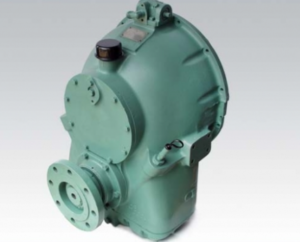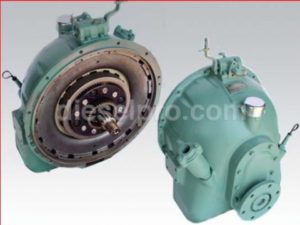

Introduction For Allison M & MH Marine Transmissions
- Overview of Allison M & MH series in marine applications
- Legacy, reliability, and usage in commercial/recreational vessels
- Why proper servicing matters: performance, longevity, and safety
General Specifications For Allison M & MH Marine Transmissions
- Physical dimensions
- Weight
- Input/output shaft specs
- Rotation direction and gear ratios
- Torque handling and horsepower limits
Installation Guidelines For Allison M & MH Marine Transmissions
- Pre-installation checklist
- Mounting procedures
- Alignment with engine and shaft
- Fastener torque specifications
- Sealing surfaces and gasket prep
Initial Startup Procedure For Allison M & MH Marine Transmissions
- Priming lubrication systems
- Fluid type and fill instructions
- Manual engagement and rotation
- Air testing and pressure checks
- First-run operating parameters
Scheduled Maintenance For Allison M & MH Marine Transmissions
- Daily, weekly, and seasonal checks
- Oil and filter change intervals
- Temperature and pressure monitoring
- Linkage and cable adjustment
- Fluid sampling for wear indicators
Inspecting and Replacing Bearings and Gears For Allison M & MH Marine Transmissions
- Identifying signs of wear
- Disassembly prep and safety
- Gear inspection tolerances
- Bearing removal and press-fit install
- Rechecking alignment and backlash
Clutch Inspection and Replacement Procedures
- Accessing clutch pack
- Wear patterns and friction plate scoring
- Spring, disc, and piston checks
- Clearance measurements
- Reassembly with proper preload
Oil Pump Service For Allison M & MH Marine Transmissions
- Identifying symptoms of failure
- Accessing and removing oil pump
- Rotor and housing wear inspection
- Replacing or rebuilding components
- Reinstallation and priming
Hydraulic Control System Overview and Testing
- Valve body components and layout
- Pressure testing procedures
- Solenoid function and replacement
- Internal passage cleaning
- Testing with hydraulic gauges
Shift Lever and Cable Adjustment Procedures
- Inspecting and adjusting shift linkage
- Free-play and detent engagement
- Correct neutral and gear alignment
- Replacing worn bushings or cables
- Verifying cockpit-to-transmission shift timing
Troubleshooting Common Problems For Allison M & MH Marine Transmissions
- Slipping in gear
- No engagement in forward or reverse
- Overheating
- Noise under load
- Oil contamination or leakage
Transmission Removal and Reinstallation Procedures
- Disconnecting cooling and control systems
- Supporting the weight safely
- Removing fasteners and couplings
- Extracting from engine room
- Reinstallation alignment tips
Parts and Component Replacement Guide For Allison M & MH Marine Transmissions
- Gasket and seal kits
- Bearing and gear sets
- Clutch discs and pressure plates
- Oil pumps and shafts
- Housing and input/output assemblies
Rebuild Kit and Aftermarket Parts Overview For Allison M & MH Marine Transmissions
- Benefits of aftermarket kits from Diesel Pro Power
- What’s included in a typical rebuild kit
- Matching components to serial numbers
- Ordering complete replacement units vs. individual components
- Warranty and quality assurance
50 FAQs – Frequently Asked Questions For Allison M & MH Marine Transmissions
Disclaimer
For precise tolerances, torque specs, and advanced diagnostics, always refer to the OEM service manual when available. This guide is a practical reference based on standard service practices.
Please follow and like us:



 Free US Calls: 1-888-433-4735
Free US Calls: 1-888-433-4735 International: 305-545-5588
International: 305-545-5588